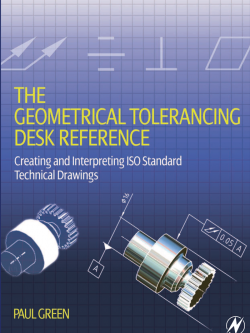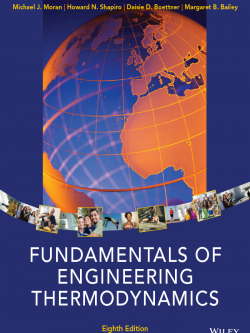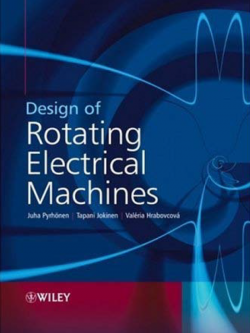Fundamentals of Engineering Thermodynamics by Moran, Shapiro, Boettner and Bailey continues its tradition of setting the standard for teaching students how to be effective problem solvers. Now in its eighth edition, this market-leading text emphasizes the authors collective teaching expertise as well as the signature methodologies that have taught entire generations of engineers worldwide. Integrated throughout the text are real-world applications that emphasize the relevance of thermodynamics principles to some of the most critical problems and issues of today, including a wealth of coverage of topics related to energy and the environment, biomedical/bioengineering, and emerging technologies.
Vector Mechanics for Engineers: Statics and Dynamics 11th Edition, Kindle Edition
About the Author
Ferdinand P. Beer. Born in France and educated in France and Switzerland, Ferd received an M.S. degree from the Sorbonne and an Sc.D. degree in theoretical mechanics from the University of Geneva. He came to the United States after serving in the French army during the early part of World War II
and taught for four years at Williams College in the Williams-MIT joint arts and engineering program. Following his service at Williams College,
Ferd joined the faculty of Lehigh University where he taught for thirty-seven years. He held several positions, including University Distinguished Professor
and chairman of the Department of Mechanical Engineering and Mechanics, and in 1995 Ferd was awarded an honorary Doctor of Engineering degree
by Lehigh University.
E. Russell Johnston, Jr. Born in Philadelphia, Russ received a B.S. degree in civil engineering from the University of Delaware and an Sc.D. degree
in the field of structural engineering from the Massachusetts Institute of Technology. He taught at Lehigh University and Worcester Polytechnic Institute before joining the faculty of the University of Connecticut where he held the position of chairman of the Department of Civil Engineering and taught for twenty-six years. In 1991 Russ received the Outstanding Civil Engineer Award from the Connecticut Section of the American Society of Civil
Engineers.
David F. Mazurek. David holds a B.S. degree in ocean engineering and an M.S. degree in civil engineering from the Florida Institute of Technology and a Ph.D. degree in civil engineering from the University of Connecticut. He was employed by the Electric Boat Division of General Dynamics Corporation and taught at Lafayette College prior to joining the U.S. Coast Guard Academy, where he has been since 1990. He is a registered Professional Engineer in Connecticut and Pennsylvania, and has served on the American Railway Engineering & Maintenance-of-Way Association’s Committee 15—Steel Structures since 1991. He is a Fellow of the American Society of Civil Engineers, and was elected to the Connecticut Academy of Science and Engineering in 2013. He was the 2014 recipient of both the Coast Guard Academy’s Distinguished Faculty Award and its Center for Advanced Studies Excellence in Scholarship
Award. Professional interests include bridge engineering, structural forensics, and blast-resistant design.
and taught for four years at Williams College in the Williams-MIT joint arts and engineering program. Following his service at Williams College,
Ferd joined the faculty of Lehigh University where he taught for thirty-seven years. He held several positions, including University Distinguished Professor
and chairman of the Department of Mechanical Engineering and Mechanics, and in 1995 Ferd was awarded an honorary Doctor of Engineering degree
by Lehigh University.
E. Russell Johnston, Jr. Born in Philadelphia, Russ received a B.S. degree in civil engineering from the University of Delaware and an Sc.D. degree
in the field of structural engineering from the Massachusetts Institute of Technology. He taught at Lehigh University and Worcester Polytechnic Institute before joining the faculty of the University of Connecticut where he held the position of chairman of the Department of Civil Engineering and taught for twenty-six years. In 1991 Russ received the Outstanding Civil Engineer Award from the Connecticut Section of the American Society of Civil
Engineers.
David F. Mazurek. David holds a B.S. degree in ocean engineering and an M.S. degree in civil engineering from the Florida Institute of Technology and a Ph.D. degree in civil engineering from the University of Connecticut. He was employed by the Electric Boat Division of General Dynamics Corporation and taught at Lafayette College prior to joining the U.S. Coast Guard Academy, where he has been since 1990. He is a registered Professional Engineer in Connecticut and Pennsylvania, and has served on the American Railway Engineering & Maintenance-of-Way Association’s Committee 15—Steel Structures since 1991. He is a Fellow of the American Society of Civil Engineers, and was elected to the Connecticut Academy of Science and Engineering in 2013. He was the 2014 recipient of both the Coast Guard Academy’s Distinguished Faculty Award and its Center for Advanced Studies Excellence in Scholarship
Award. Professional interests include bridge engineering, structural forensics, and blast-resistant design.
Phillip J. Cornwell. Phil holds a B.S. degree in mechanical engineering from Texas Tech University and M.A. and Ph.D. degrees in mechanical and aerospace engineering from Princeton University. He is currently a professor of mechanical engineering and Vice President of Academic Affairs at Rose-Hulman Institute of Technology where he has taught since 1989. Phil received an SAE Ralph R. Teetor Educational Award in 1992, the Dean’s Outstanding Teacher Award at Rose-Hulman in 2000, and the Board of Trustees’ Outstanding Scholar Award at Rose-Hulman in 2001.
Phil was one of the developers of the Dynamics Concept Inventory.
E. Russell Johnston Brian obtained his B.S. and M.S. degrees in Engineering Mechanics from Virginia Tech, and his Ph.D. in Bioengineering from the
University of Utah. He worked in the Air Force Research Laboratories before teaching at the U.S. Air Force Academy for seven years. Brian has
taught in the Mechanical Engineering Department at Cal Poly, San Luis Obispo since 2006. He has been very active in the American Society of
Engineering Education, serving on its Board from 2008–2010. With a team of five, Brian developed the Dynamics Concept Inventory to help
assess student conceptual understanding. His professional interests include educational research, aviation physiology, and biomechanics
Phil was one of the developers of the Dynamics Concept Inventory.
E. Russell Johnston Brian obtained his B.S. and M.S. degrees in Engineering Mechanics from Virginia Tech, and his Ph.D. in Bioengineering from the
University of Utah. He worked in the Air Force Research Laboratories before teaching at the U.S. Air Force Academy for seven years. Brian has
taught in the Mechanical Engineering Department at Cal Poly, San Luis Obispo since 2006. He has been very active in the American Society of
Engineering Education, serving on its Board from 2008–2010. With a team of five, Brian developed the Dynamics Concept Inventory to help
assess student conceptual understanding. His professional interests include educational research, aviation physiology, and biomechanics
10 تومان
Product details
| Publisher | McGraw-Hill Higher Education |
|---|---|
| Language | English |
| ISBN | 9780073398242 |
| Released | 11 edition |





